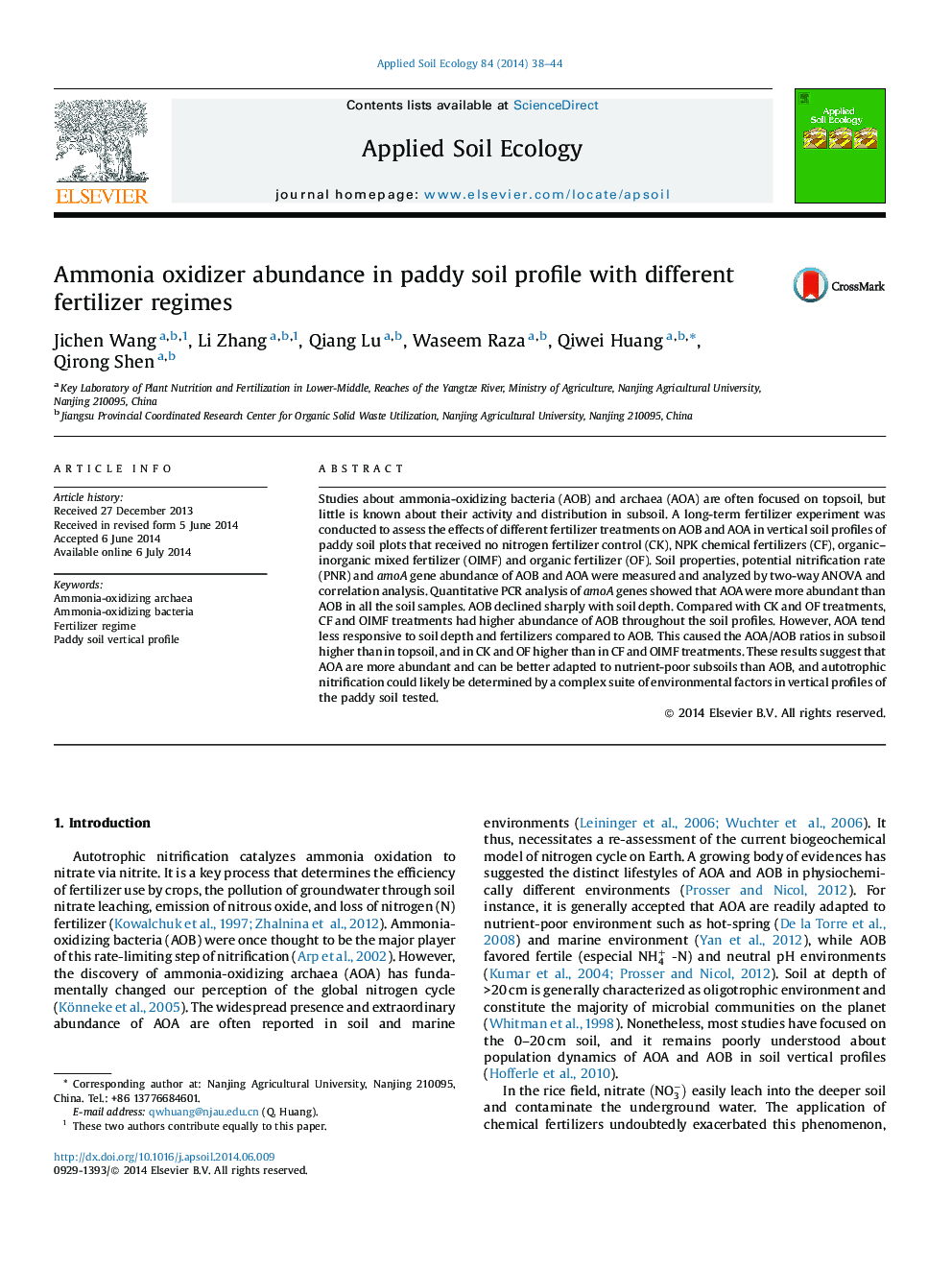| Article ID | Journal | Published Year | Pages | File Type |
|---|---|---|---|---|
| 4382166 | Applied Soil Ecology | 2014 | 7 Pages |
•AOA abundance was higher than AOB in paddy soil vertical profiles.•The ratio of AOA to AOB in topsoil was lower than that in subsoil.•Chemical and organic–inorganic compound fertilizers could improve AOB abundance.•AOA abundance was gently responsive to fertilizer and soil depth compared to AOB.
Studies about ammonia-oxidizing bacteria (AOB) and archaea (AOA) are often focused on topsoil, but little is known about their activity and distribution in subsoil. A long-term fertilizer experiment was conducted to assess the effects of different fertilizer treatments on AOB and AOA in vertical soil profiles of paddy soil plots that received no nitrogen fertilizer control (CK), NPK chemical fertilizers (CF), organic–inorganic mixed fertilizer (OIMF) and organic fertilizer (OF). Soil properties, potential nitrification rate (PNR) and amoA gene abundance of AOB and AOA were measured and analyzed by two-way ANOVA and correlation analysis. Quantitative PCR analysis of amoA genes showed that AOA were more abundant than AOB in all the soil samples. AOB declined sharply with soil depth. Compared with CK and OF treatments, CF and OIMF treatments had higher abundance of AOB throughout the soil profiles. However, AOA tend less responsive to soil depth and fertilizers compared to AOB. This caused the AOA/AOB ratios in subsoil higher than in topsoil, and in CK and OF higher than in CF and OIMF treatments. These results suggest that AOA are more abundant and can be better adapted to nutrient-poor subsoils than AOB, and autotrophic nitrification could likely be determined by a complex suite of environmental factors in vertical profiles of the paddy soil tested.
